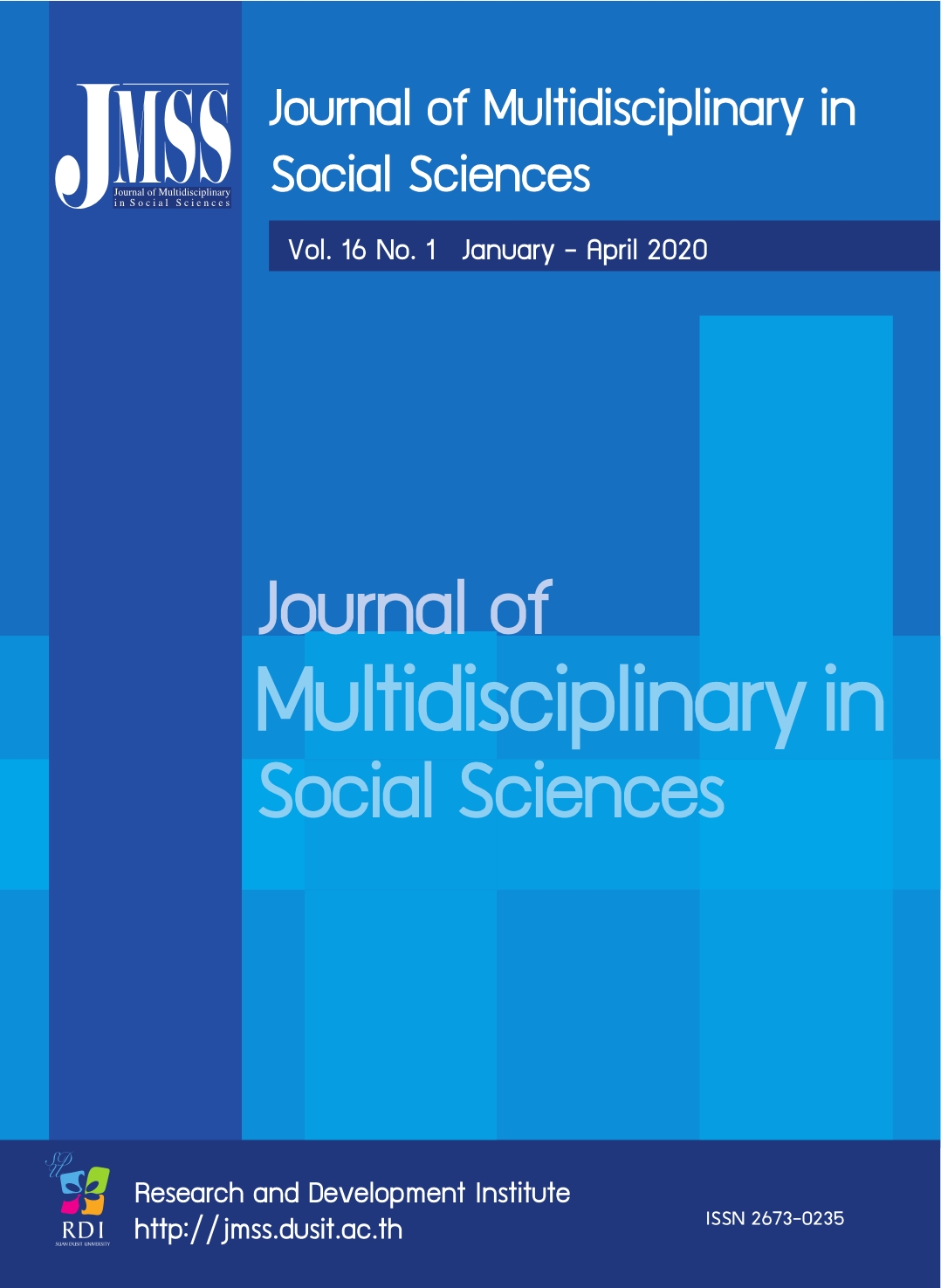Integration of Anthropological Surveying Tools, Walking Maps with the Geographic Information System to develop the Historical Map of Pak Phraek Community, Muang District, Kanchanaburi
Keywords:
Walking map, Geographic information system, Historical map of Pak Phraek Community, KanchanaburiAbstract
The objectives of this research is to survey and collect the data for Pak Phraek Community historical sites and to create the historical maps of Pak Phraek Community, Kanchanaburi Province. The population and key informants included; villagers, philosopher of the Pak Phraek Community, 3 historical scholars, and the government agencies. There are four steps of data collection which are; Community Coordination, Observation and Survey, Interviews and Lesson Learned. This research used the geo-informatics concept, Participatory Geographic Information System concept (PGIS), and the walking map concept as the main concepts for this study. The research results are as follows:
(1) the surveyed data for the historical map making of Pak Phraek Community has concluded two issues as follows; the first issue, Pak Phraek community economy map, from the walking map to the completed map and importing into the geographic information system (GIS), found that there were 97 stores with 22 types of shops. The second issue, the map of Pak Phraek community historical houses/sites from the walking map surveying, to the complete map and imported into the geographic information system (GIS), found that there are 40 learning resources. (2) The historical map making of Pak Phraek Community implemented the geographic information system in the production and development of the Pak Phraek Community map which included; field work, data input, data edit, data management, data manipulation, data analysis and data display. In this way, the Participatory Geographic Information System (PGIS) concept has been adopted to be one of the work processes by free program software, for mapping. The results show that the information obtained from the PGIS process, the community and researchers were able to create a new map obtained from real/living information and to create community ownership of the data.
References
Chungsathiansap, K., Tengrang, K., Pinkaew, R., & Petchkong, W. (2002). Communities Way of life :A learning guide that makes community work easy, effective and fun. Nonthaburi: Health System Research Institute Ministry of Public Health.
Department of Tourism and Sport of Kanchanaburi. (2016). Pak Preak: The old road, Tell a Stories of Kanchanaburi. Kanchanaburi: Department of Tourism and Sport, Kanchanaburi.
Dontree, S. (1999). The Principle of Remote Sensing. Chiangmai: ChiangMai University.
Fagerholm, N., Eilola, S., Kisanga, D., Arki, V., & Käyhkö, N. (2019). Place-based landscape services and potential of participatory spatial planning in multifunctional rural landscapes in Southern highlands, Tanzania. Landscape Ecology, 34(7), 1769-1787. https://doi. org/10.1007/s10980-019-00847-2
Khunrattanasiri, W. (2019). Geometric coordinate transformation. Retrieved February 14, 2019, from https://www.dnp9.com/dnp9/web1/file_editor/file/Fundamental%20-%203%20Geomatric%20Correction.pdf
Ministry of Digital Economy and Society. (2016). Smart City. Retrieved January 13, 2018, from http://mdes.go.th/view
Orban-Ferauge F. (2011). Participatory Geographic Information Systems and Land Planning. FUNDP: NAMUR, BELGIUM.
Ratanopad, S. (2015). Web site Mapping in archaeological site “KU” Tung Gula Ronghai area, Roi Et. Mahasarakam: Mahasarakam University.
Sriboonruang, K., & Kumkrua, M. (2017). Community way of life Research Process for the Thung- SamoRelation re-Building in Walking Map and Community Calendar Concept. Kanchanaburi: Kanchanaburi Rajabhat University.
Thailand Sustainable Development Foundation. (2016). Technique and Tools for Communities Thinking Study. Bangkok: Thailand Sustainable Development Foundation.
United States Geological Survey. (2019). Sentinel-2. Retrieved February 26, 2019, from https://earthexplorer.usgs.gov/
Downloads
Published
How to Cite
Issue
Section
License

This work is licensed under a Creative Commons Attribution-NonCommercial-NoDerivatives 4.0 International License.








